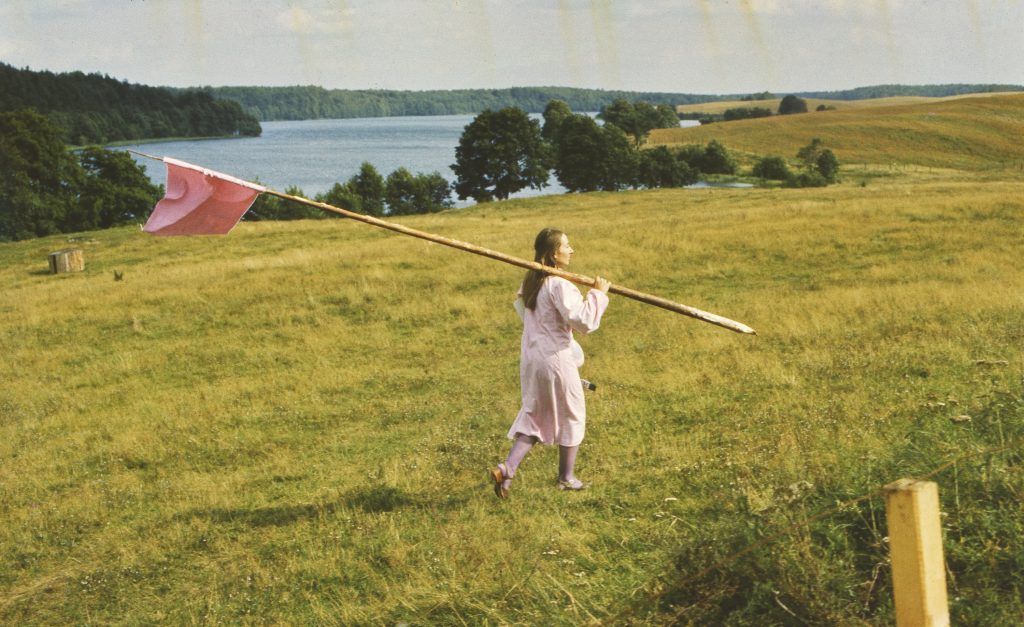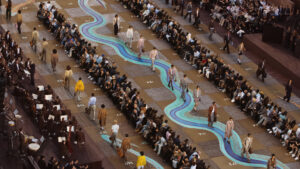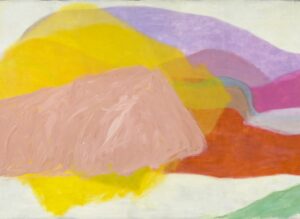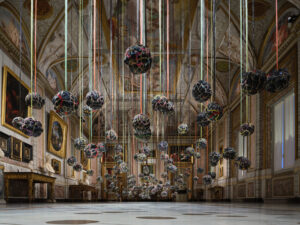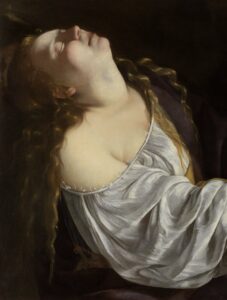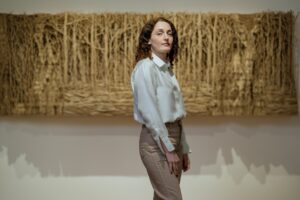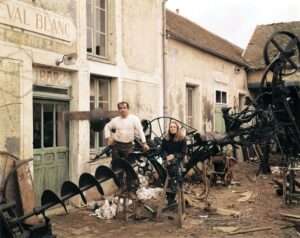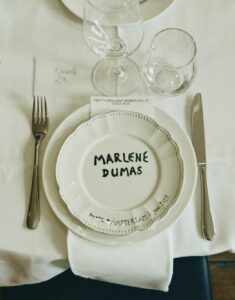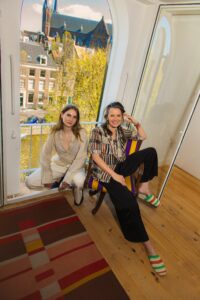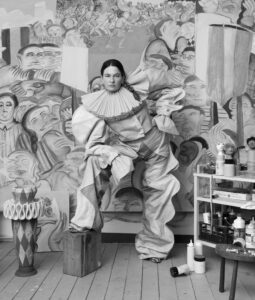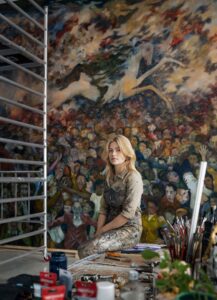Monumental miniatures
Sculptors and the art of jewelry
It is not surprising that sculptors also venture into jewelry making. These tend to be small sculptures anyway.
Sculptors have a carpenter’s eye. They have a razor-sharp sense of sizes and formats, rights and curves, proportions and, above all, scale. This is no coincidence, of course, as many sculptors work from small to large, from pocket-size to monumental, and a good sense of scale is essential. An initial model for a monumental sculpture is often not much bigger than the hand that made it, while the final result can be metres large. Yet the smallest scale model usually already contains the correct forms and proportions of the intended work. There is an anecdote about Henry Moore, for example, that he had a difference of opinion with one of his assistants about the correct proportions in the enlarged model of his sculpture Nuclear Energy. Although it was only a few centimetres on a size of several metres, when measured, it turned out that Moore was right.
That sculptors move seemingly effortlessly into the field of jewellery art is hardly surprising. In many cases, jewellery and jewels are sculptures anyway – think of the silver charms hanging from children’s bracelets – and over the centuries, goldsmithing has always nestled snugly against its big sister, sculpture.
The design for a pendant carved in pearwood from around 1530 illustrates this proximity well. It was made by a carver known by the nickname Master I.P., who worked in southern Germany. Master I.P. was a specialist in fine woodcarving, but in his oeuvre the design for the pendant, at barely 12 centimetres high, is one of the smallest-scale sculptures. It depicts the first human couple Adam and Eve, standing on either side of the tree of the knowledge of good and evil. God had forbidden them to eat from the apples of this tree of paradise, but the couple succumbed to the temptations of the serpent-like devil, who wriggled around the tree trunk: in fact, if you look closely, you will see that a bite has been taken from the little apple that Adam holds in his hand, which forms the exact centre of the representation. The implications are well known.
Master I.P. presented this miniature tableau at the bottom of an arch of all kinds of Renaissance ornaments, a style that was ultra-modern in his time and had only recently arrived from Italy. What little ornaments he carved in wood were finally meant to be executed by a goldsmith in gold, silver and precious stones: for instance, the tree between Adam and Eve was meant to be a sprig of blood coral – an evil and disease repelling material often worn as an amulet. In the framework surrounding the representation are all kinds of tiny convex and faceted gemstone shapes. Here, Master I.P. applied an amusing leitmotif in the form of very small apples that are incorporated into the ornamentation as spheres. This created a meaningful piece of jewellery that constantly reminds its wearer of the fatal Fall and thus of his own earthly mortality, the protection of the coral sprig notwithstanding.

Drive to experiment
Even in our time, jewellery is not the exclusive domain of silversmiths, who are used to working to the millimetre. Especially in the postwar period, jewellery increasingly took on sculptural forms, blurring the boundaries between sculpture and goldsmithing. They became tighter, more abstract and plastic, picking up the traces of successful sculptors of those years, such as Constantin Brancusi, Henri Moore, Barbara Hepworth, Naum Gabo, Antoine Pevsner and Hans Arp, whose formal language was rooted in natural or exotic ‘primitive’ examples. Dutch jewellery designers Chris Steenbergen, Archibald Dumbar and Riet Neerincx pioneered this sculptural direction, giving their brooches forged from gold or silver a plasticity previously unheard of.
From Chris Steenbergen (1920-2007), the CODA Museum in Apeldoorn owns a fascinating design from the 1950s, which is made up of interlocking pointed sheets of copper that move upwards like a little staircase. They give this tenuous construction great tension, like a house of cards that could collapse at any moment. The result is a purely sculptural object that, at twenty centimetres high, far exceeds the size of a traditional piece of jewellery. As such, it was not intended as such, but as a trial to test the stability of the composition and its construction. The object marks Steenbergen’s urge to experiment, as he was not content with the traditional definition of a brooch as a bar of gold with a pin behind it (‘a glorified safety pin’).
Riet Neerincx (1925-2012) was particularly attracted to the post-war innovations in British sculpture, with which she had come into contact through her training in London in the late 1940s. A broche she made in 1964 forms an egg shape that is interrupted on each side by large oval openings. The spatiality of inner and outer forms thus created is obviously indebted to the sculptures of Barbara Hepworth from these years, as her Oval form (Trezion) from 1963 in the Kröller-Müller Museum well illustrates.
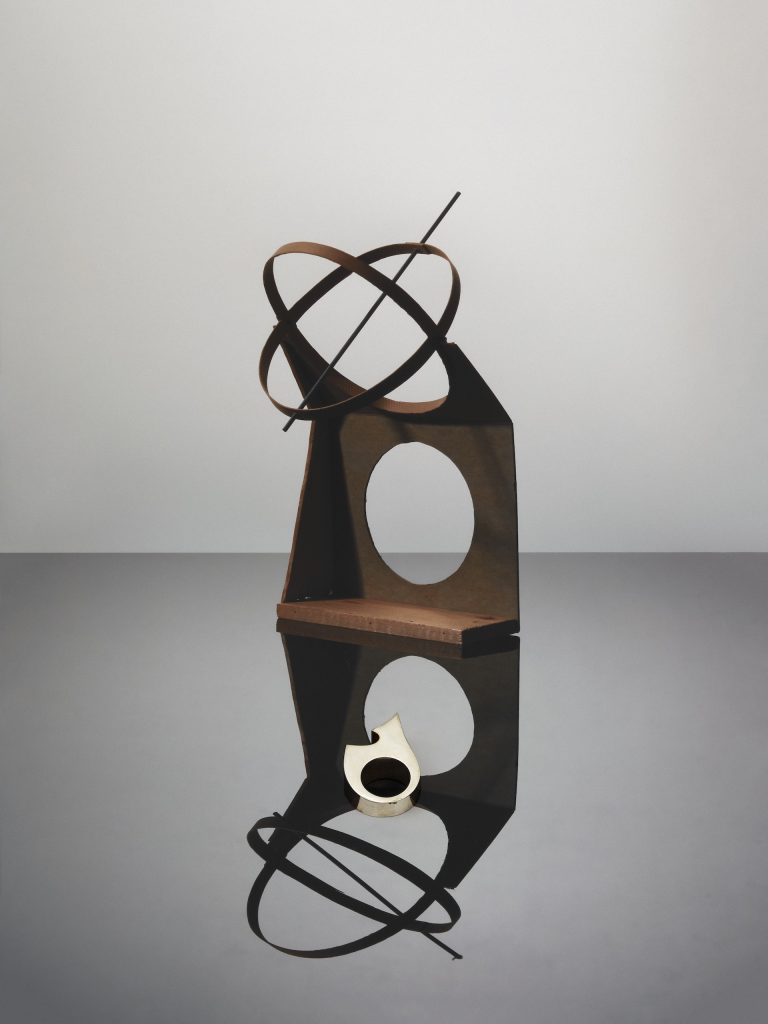
Miniature reliefs
These innovations in jewellery art came from the sculptor’s corner, but sculptors themselves also regularly ventured – with some success – into the field of jewellery; needless to say, their sense of scale was an important asset in the process. Yet it is striking to see that, while jewellers in recent decades actually stretched the plasticity of their jewellery – with the groundbreaking works of Emmy van Leersum (1930-1984), Gijs Bakker (1942) and Onno Boekhoudt (1944-2003) as undisputed highlights since the mid-1960s – many sculptors, on the other hand, showed a certain conservatism. Often, spatiality (which they patented in their sculptures) gave way to more traditional, flat forms, for the sake of wearability. This applies to artists as diverse as Picasso, André Derain, Lucio Fontana, Alexander and Hans Arp.
A pioneer among jewellery sculptors was Catalan Julio González (1876- 1942), who, after his family settled in Paris in 1900, initially made his living making metal ornaments, buckles and jewellery. Only later did he turn to metal sculpture, encouraged by his friend and compatriot Picasso. Naturally, Picasso, the all-rounder, also explored the jewellery genre, although his experiments only date from a relatively late point in his career: in the mid-1950s, he designed a series of eighteen gold pendants and brooches as miniature reliefs. They were made as drawings scratched into a slice of wax and then cast off in gold. Although Picasso’s signature drawing style is immediately recognisable here, the pendants also evoke reminiscences of primitive jewellery from ancient times or ancient Greek coins.
The gold pendant Croix by the sculptor Jean (‘Hans’) Arp (1886-1966), one of the jewellery pieces he designed as early as the 1930s but which were not executed until around 1965, does not excel in plasticity either. The flowing cross shape is rather flat, and unlike the organic forms of his polished metal or stone sculptures – once aptly characterised as Natur-Verdichtungen – the suggestion of space in this pendant is achieved almost exclusively through the reflection of the slightly convex surface. Yet this decorative object cannot be denied a certain monumentality.
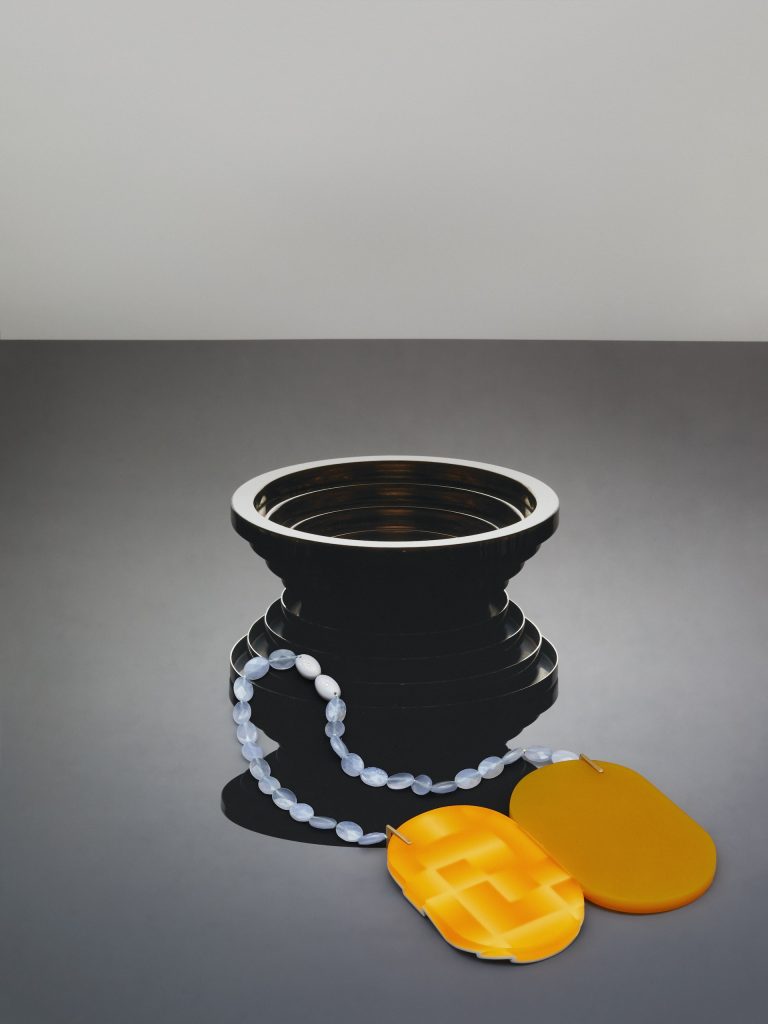
Rusty and rugged sheet metal
The little-known and recently deceased Rotterdam native Siem van den Hoonaard (1900-1938) was one of the few in the Netherlands who simultaneously worked as a sculptor and a goldsmith. He had trained as a jewellery setter with Van Kempen, but had higher artistic ambitions, which he translated into a series of sculptural, semi-abstract compositions made of sheet metal from 1931 onwards. The few sculptures that have survived from his hand show an idiosyncratic and original artistry. However, no more examples of his jewellery are known and so their form is guesswork. Perhaps they translated the monumentality of his sculpture into a manageable bowl and were akin to Chris Steenbergen’s later jewellery art. However, a description in a 1938 in memoriam suggests that Van den Hoonaard was less innovative and original in jewellery work than in his sculptures.
Finally, of more sculptural audacity are the Befbeelden by Carel Visser (1928- 2015), a series of neck and shoulder jewellery made of pieces of metal folded and bent from 1994. Not only did the sculptor choose the rusty and rugged sheet metal, a material he also often used in his sculptures, he also stayed true to his old compositional principles – balance and symmetry. The Bef sculptures are less severe than Visser’s earlier constructivist sculpture, and they have a playfulness that is also so prominent in his assemblages and collages. Take the necklace of pieces of sheet metal and rods welded and bent together: the curved shapes follow the body lines of the shoulder and neck of the intended wearer, while on the chest is a horizontal, zigzag-folded strip of metal as a nod to the folded and starched lace collars of the golden age. For Carel Visser, however, as the name ‘bef sculptures’ suggests, these jewellery pieces are simply sculptures. Not just to be put down on a pedestal or hung on a wall, but to be worn. Visser’s sculptural jewellery has made humans into pedestals.
In 2016 Redefining Jewellery was published, focusing on the collection of artists’ jewellery and the collection of the CODA Museum in Apeldoorn.
